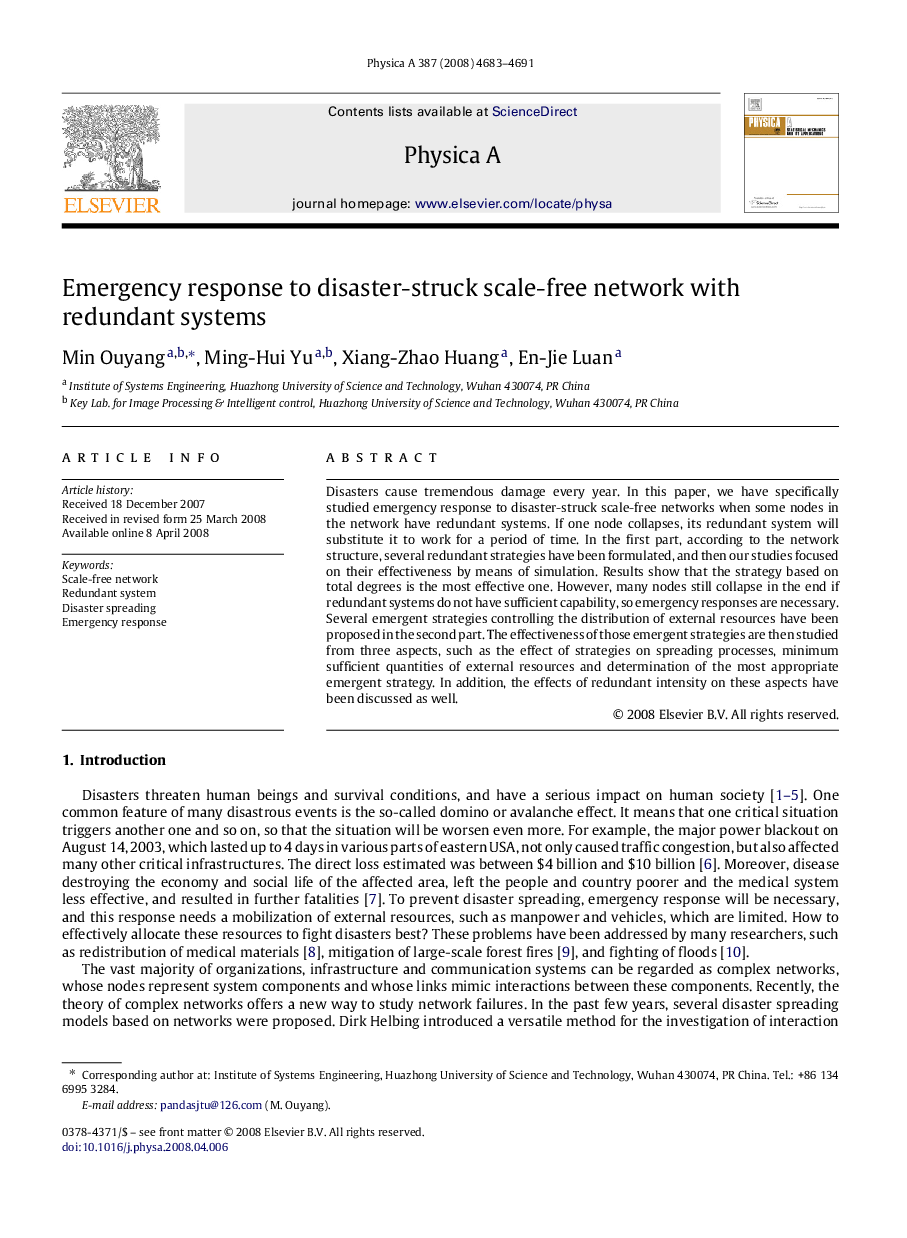| Article ID | Journal | Published Year | Pages | File Type |
|---|---|---|---|---|
| 976465 | Physica A: Statistical Mechanics and its Applications | 2008 | 9 Pages |
Disasters cause tremendous damage every year. In this paper, we have specifically studied emergency response to disaster-struck scale-free networks when some nodes in the network have redundant systems. If one node collapses, its redundant system will substitute it to work for a period of time. In the first part, according to the network structure, several redundant strategies have been formulated, and then our studies focused on their effectiveness by means of simulation. Results show that the strategy based on total degrees is the most effective one. However, many nodes still collapse in the end if redundant systems do not have sufficient capability, so emergency responses are necessary. Several emergent strategies controlling the distribution of external resources have been proposed in the second part. The effectiveness of those emergent strategies are then studied from three aspects, such as the effect of strategies on spreading processes, minimum sufficient quantities of external resources and determination of the most appropriate emergent strategy. In addition, the effects of redundant intensity on these aspects have been discussed as well.
